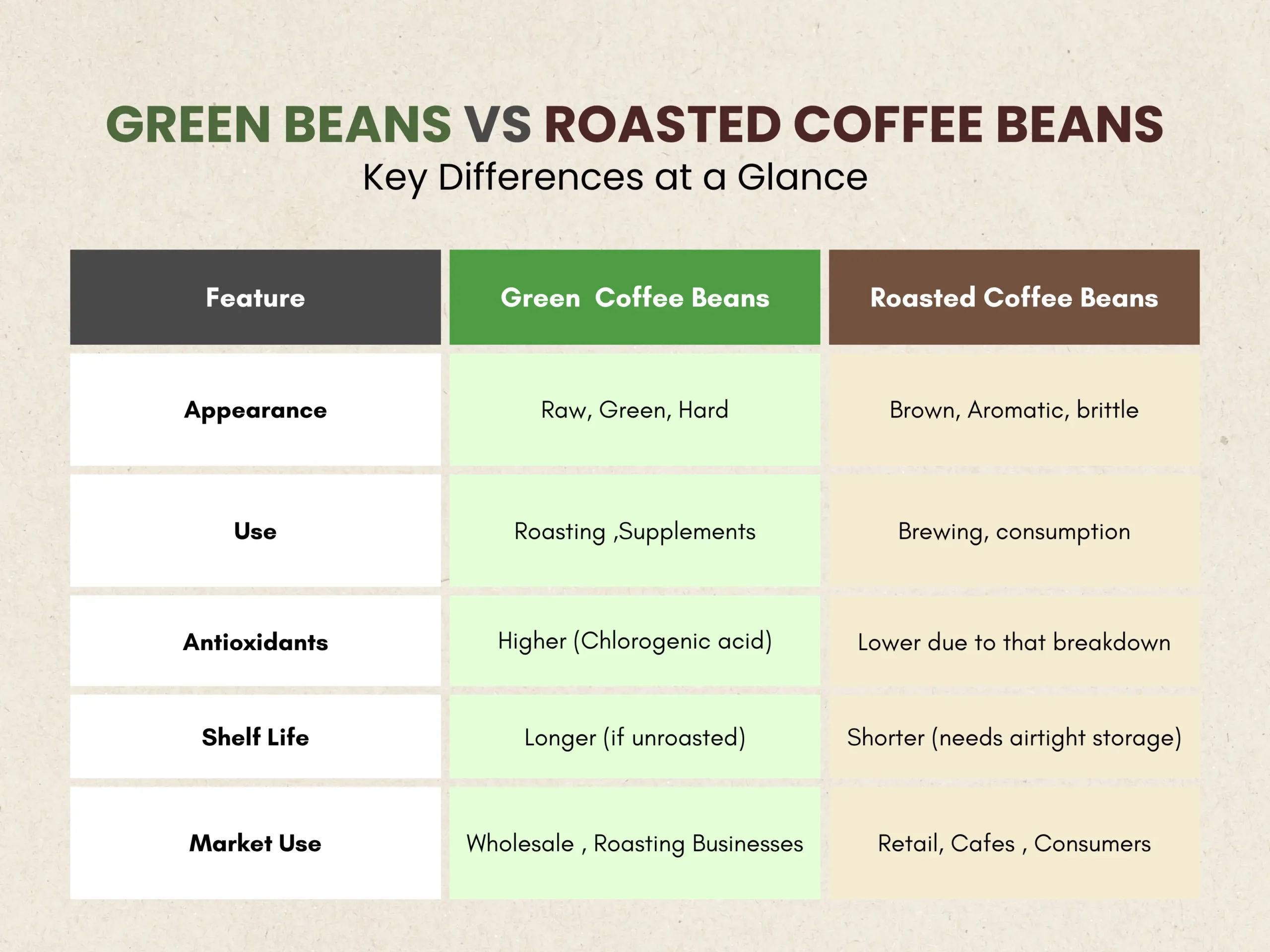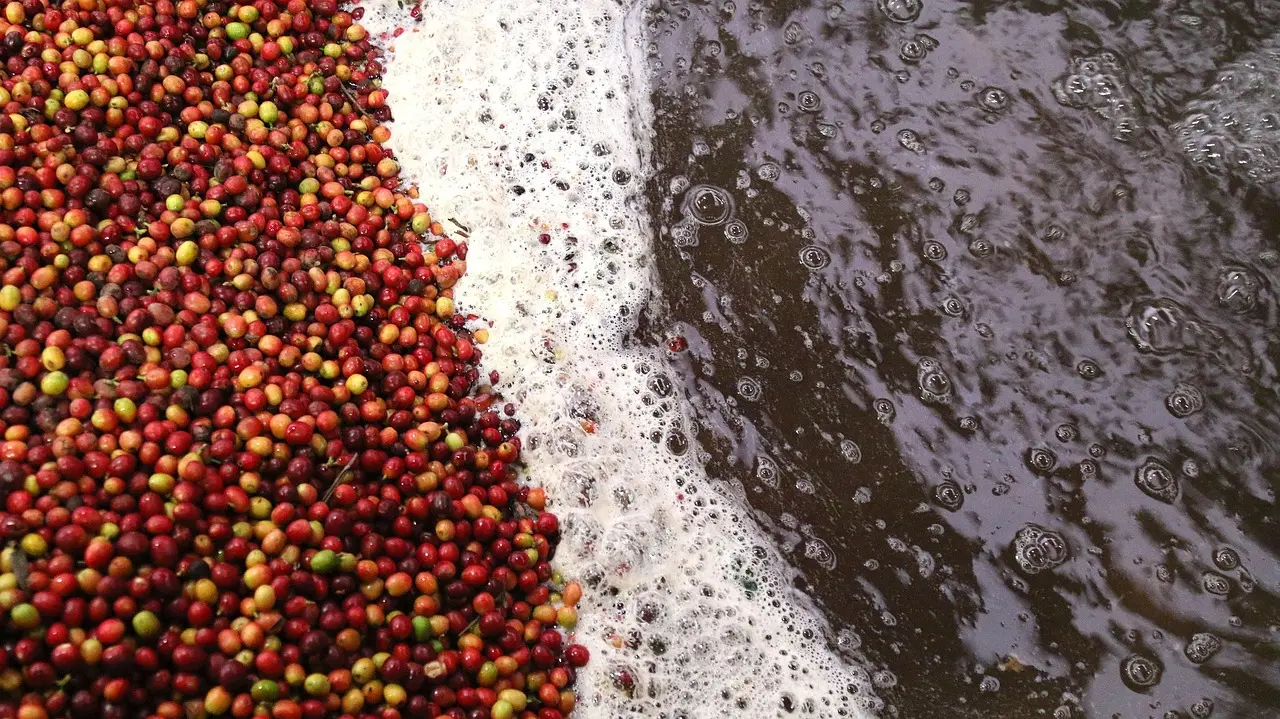
Green Beans vs. Roasted Beans: What You Should Know
When it comes to coffee, most people think of the rich aroma of Roasted Coffee Beans. But did you know that Green Coffee Beans — the raw, unroasted version — hold their own unique value, especially in the coffee industry?
Let’s break down the difference so you know exactly what you’re sipping or selling.
What Are Green Coffee Beans?
Green coffee beans are the raw seeds of coffee cherries before they are roasted. They’re firm, greenish, and loaded with natural compounds like chlorogenic acid, which breaks down during roasting.
Benefits Of Green Coffee Beans :
- Higher antioxidant content
- Used in health & weight-loss products
- Longer shelf life (when stored properly)
- Preferred by roasters for quality control & custom roasting
Before Buying Green Coffee Beans:
- Origin & Elevation Matters
– Taste profiles vary by region (Ethiopia = floral, Colombia = fruity).
– Higher elevations usually mean better acidity and complexity. - Bean Quality & Grade
– Look for uniform size, shape, and color.
– Defects or uneven beans = lower quality roast. - Processing Method
– Washed = clean & bright; Natural = fruity & heavier body. - Moisture Content
– Should be around 10–12%. Too high = mold risk; too low = stale taste. - Storage Conditions
– Needs cool, dry storage. Green beans can last up to 12 months if stored properly. - Purpose
– Are you roasting for espresso? Filter? Light or dark roast?
Choose beans based on the cup profile you want.
What Are Roasted Coffee Beans?
Roasted beans are green beans that have been heat-processed to develop flavor, aroma, and color. The roasting process transforms raw beans into the bold, aromatic coffee we know and love.
Benefits of Roasted Coffee Beans:
- Ready for brewing
- Rich flavor and aroma
- Multiple roast profiles (light, medium, dark)
- Essential for cafés, baristas, and retail shelves
Before Buying Roasted Coffee Beans:
- Freshness (Roast Date)
– Always check the roast date, not the expiry date.
– Best flavor is within 2–4 weeks of roasting. - Roast Profile
– Light Roast: Bright, acidic, fruity
– Medium Roast: Balanced and sweet
– Dark Roast: Bold, smoky, low acidity - Grind Level (if pre-ground)
– Espresso, filter, French press — each needs a different grind size. - Packaging
– Look for valve-sealed, airtight bags to keep the beans fresh. - Single Origin vs. Blend
– Single Origin: Unique flavor, traceability
– Blend: Balanced, consistent taste - Purpose & Brewing Method
– Buy beans suited to how you brew (espresso machine, Moka pot, pour-over, etc.)

Final Brew
Whether you’re sourcing raw beans or sipping a perfect roast, both green and roasted beans have a place in the coffee world. It all depends on your purpose — health, trade, or taste!
Buy from trusted roasters or suppliers who can tell you the bean origin, roast profile, and tasting notes.
















